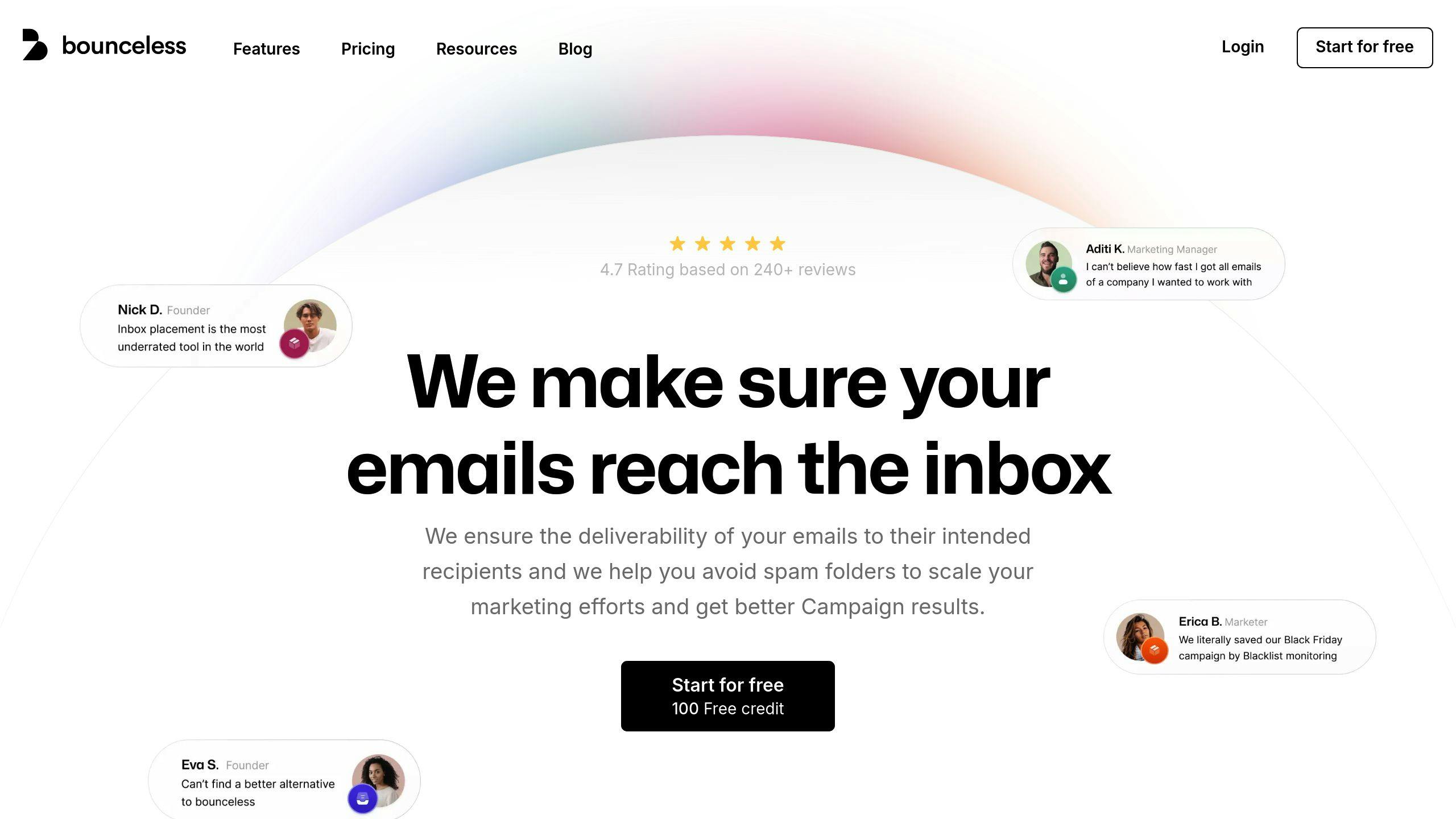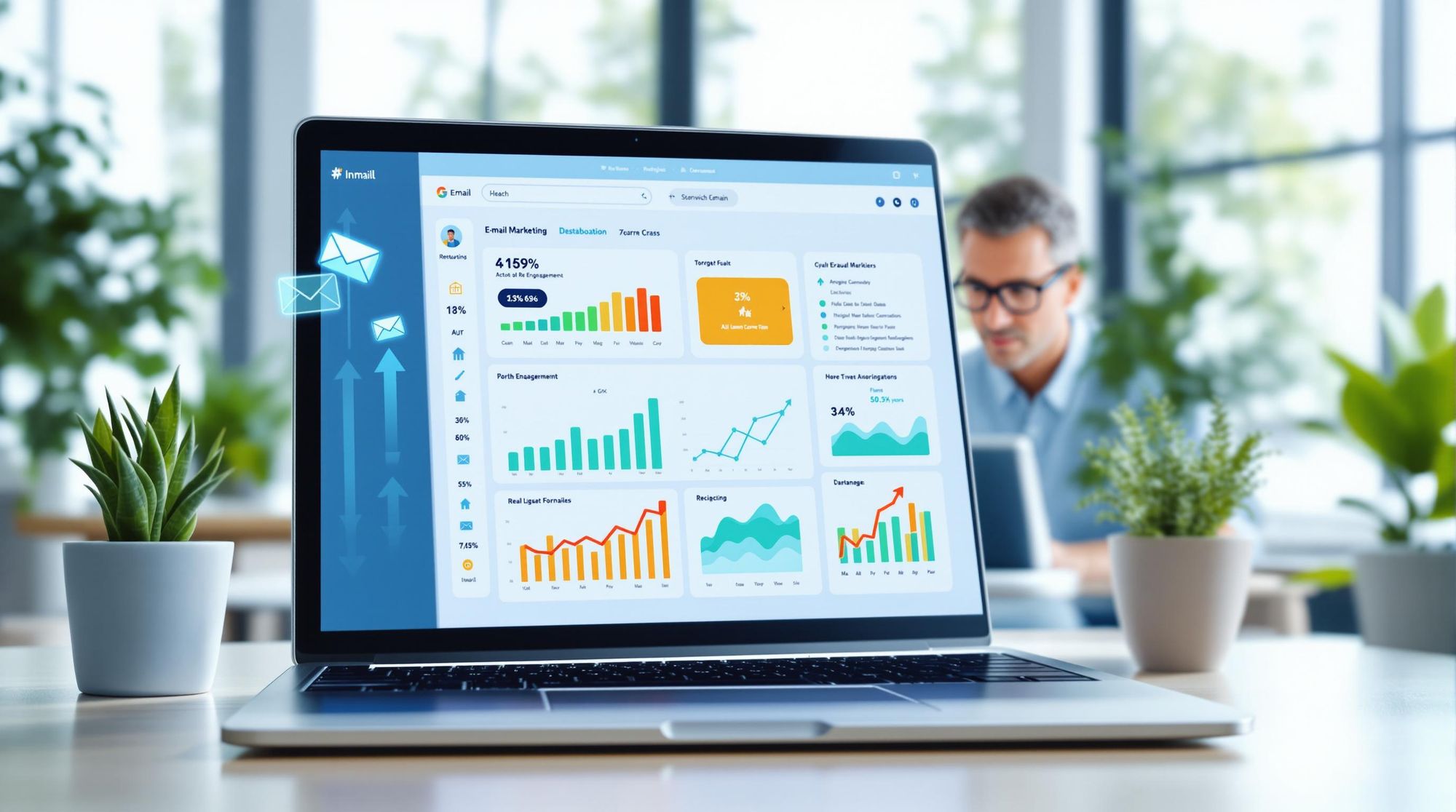- Why Automate: Save time, improve targeting, and protect your sender reputation by automating tasks like identifying inactive subscribers and sending tailored emails.
- Steps to Get Started:
- Identify Inactive Subscribers: Use metrics like email opens, clicks, and purchase history.
- Segment Your List: Group by inactivity level (e.g., recently inactive, long-term inactive) for better targeting.
- Choose the Right Tools: Platforms like HubSpot or Mailchimp, paired with email verification tools (e.g., Bounceless.io), can streamline your campaigns.
- Write Effective Emails: Focus on personalized subject lines, clear messaging, and mobile-friendly designs.
- Set Up Workflows: Automate email sequences with triggers (e.g., no engagement for 60 days) and IF/THEN rules to adjust based on responses.
- Track Results: Monitor metrics like open rates, click-through rates, and conversions. Use A/B testing to refine your approach.
Key Takeaway: Automating re-engagement campaigns saves time, reduces costs, and improves engagement rates. Tools like Bounceless.io ensure your emails land in valid inboxes, keeping your list clean and campaigns effective.
Create a Customer Journey Automation
Getting Ready for Campaign Automation
Before setting up automation, make sure your email list is ready to target the right audience effectively.
Identifying Inactive Subscribers
Subscribers can be marked as inactive if they haven’t opened your emails, clicked links, or made a purchase in the past 6-12 months. Most email platforms provide tools to filter these subscribers automatically using metrics like email opens, click-through rates, last interaction date, and purchase history.
Segmenting Your Email List
Group inactive subscribers into categories to create more focused re-engagement strategies:
| Segment Type | Criteria | Re-engagement Strategy |
|---|---|---|
| Recently Inactive | No activity in 3-6 months | Send gentle reminders |
| Long-term Inactive | No activity in 6-12 months | Use win-back offers |
| Past Customers | Bought before but inactive now | Offer exclusive deals |
| Newsletter Subscribers | Low engagement with content | Send preference surveys |
These segments help you design workflows that are more personalized and effective.
Choosing the Right Email Platform
When selecting an email platform, prioritize tools that include:
- Automated email sequences
- Advanced segmentation features
- A strong analytics dashboard
- Integration options with other tools
Platforms like HubSpot and Mailchimp are excellent choices as they offer these features. To ensure better deliverability and protect your sender reputation, integrate tools like Bounceless.io to verify your email list and reduce bounce rates.
Before launching your campaigns, clean your list with Bounceless.io to remove invalid emails. Once your list is ready and your tools are set up, you can focus on crafting emails that grab attention and encourage action.
Writing Re-Engagement Emails
Once your email list is segmented and your platform is ready, the next step is crafting emails that grab attention and encourage action. Writing effective re-engagement emails requires a mix of personalization, clear messaging, and designs that work well on mobile devices.
Writing Better Subject Lines
Subject lines play a big role in catching attention and boosting open rates. Focus on personalized, action-driven subject lines that spark curiosity:
| Subject Line Type | Example | Purpose |
|---|---|---|
| Personal Appeal | "We miss you!" | Builds an emotional connection |
| Value-Based | "Your member perks await" | Highlights benefits |
| Time-Sensitive | "Last chance to reactivate!" | Adds urgency |
| Question-Based | "Is this goodbye?" | Encourages interaction |
Adding Personal Elements
Personalization makes your emails more relevant and engaging. Use data like purchase history, location, and activity to tailor your content. For example:
- Highlight past purchases to suggest similar products.
- Recommend content based on browsing behavior.
- Offer local deals using geographic data.
- Adjust timing based on previous engagement patterns.
Creating Email Layouts
Most people check emails on their phones, so mobile-friendly designs are key. Use single-column layouts, large buttons, and responsive images to make your emails easy to read and navigate:
| Design Element | Best Practice | Impact |
|---|---|---|
| Layout Structure | Single-column design | Enhances mobile readability |
| Call-to-Action | Large, touch-friendly buttons | Boosts click-through rates |
| Font & Images | 14px+ text and responsive images with alt text | Improves accessibility and clarity |
Keep your design simple and focused on your main message. Make it easy for recipients to take action. Once your emails are ready, the next step is setting up workflows to deliver them to the right audience at the right time.
Building Automation Workflows
Once your re-engagement emails are ready, the next step is to set up automated workflows to deliver them effectively. These workflows ensure your messages reach inactive subscribers at the right time and adjust based on how they respond.
Setting Up Email Triggers
Triggers kick off your re-engagement workflows by reacting to specific subscriber actions - or inactions - like no recent engagement or purchases. Here's how you can define these triggers:
| Trigger Type | Time Frame | Action |
|---|---|---|
| No Engagement (Email or Website) | 60-90 days | Start re-engagement sequence |
| No Purchases | 120 days | Launch win-back campaign |
For best results, create a sequence of three emails, spaced 5-7 days apart. This timing gives subscribers room to respond while keeping the momentum alive. After setting up your triggers, use IF/THEN rules to tailor your workflow based on subscriber actions.
Using IF/THEN Rules
IF/THEN rules allow you to customize how your workflow responds to subscriber behavior. These rules create decision paths that make your emails more relevant:
| If Subscriber... | Then... | Wait Period |
|---|---|---|
| Opens Email 1 | Send a personalized follow-up and mark them as active | Immediate |
| No Response | Send a follow-up with a stronger call-to-action | 5 days |
| Still Inactive | Send a final reminder | 7 days |
Personalizing your workflows is key, but making sure your emails actually land in valid inboxes is just as important.
Email List Maintenance with Bounceless.io

"Success depends on delivering the right message to the right behavior while ensuring inbox placement."
Incorporate Bounceless.io into your workflow to keep your email list clean and improve deliverability. Automate list cleaning every 90 days to remove invalid addresses before launching your re-engagement campaigns.
With your automation set up, the next step is to track performance and fine-tune your strategy.
Tracking and Improving Results
To make your re-engagement campaigns more effective, it’s crucial to measure performance and tweak your strategy based on the data. By focusing on the right metrics and making adjustments, you can boost your results significantly.
Key Metrics to Watch
Keep an eye on these metrics to evaluate how well your campaign is performing:
| Metric Type | Target Range | Suggested Action |
|---|---|---|
| Open Rate | 20-25% increase | Experiment with subject lines and timing |
| Click-Through Rate | 15-20% improvement | Improve content and calls-to-action (CTAs) |
| Conversion Rate | 10-15% uplift | Fine-tune offers and landing pages |
| Unsubscribe Rate | Below 1% | Ensure content stays relevant |
Review these metrics monthly to spot trends and areas for improvement. Look at how different subscriber groups are engaging to refine your approach. Once you know what to focus on, use A/B testing to optimize specific aspects of your campaign.
A/B Testing for Better Engagement
A/B testing helps you figure out what works best for re-engaging inactive subscribers. Test elements like subject lines, send times, and CTAs to see what drives better results. Test one variable at a time over a two-week period to get clear insights.
| Element | Test Variables | Potential Impact |
|---|---|---|
| Subject Lines | Personal vs Generic | 25-30% variation in open rates |
| Send Times | Morning vs Evening | 15-20% difference in engagement |
| CTAs | Button vs Text Link | 10-15% change in click rates |
Fine-Tuning Automation
Leverage performance data to improve your automation workflows:
- Adjust triggers based on how subscribers behave.
- Focus on content types that perform well.
- Keep your email list clean by validating it regularly.
Review your workflows monthly or quarterly to stay aligned with trends and improve results. By consistently tracking performance, testing new ideas, and refining your strategy, you can build campaigns that keep your audience engaged and strengthen your subscriber relationships.
Results of Automated Re-Engagement
Automated re-engagement campaigns help save time, maintain consistent communication, and boost both engagement and retention. A key factor in achieving these outcomes is keeping your email lists clean and up-to-date.
Improving list hygiene can lead to:
| Impact Area | Typical Results |
|---|---|
| Deliverability | 15-20% improvement |
| Campaign Costs | 25-30% reduction |
| Engagement Rates | Around 20% increase |
When clean email lists are combined with targeted, personalized content, campaigns become far more effective [1]. Using automation alongside personalization and routine list maintenance creates a strong foundation for re-engaging your audience and achieving consistent, long-term results.

